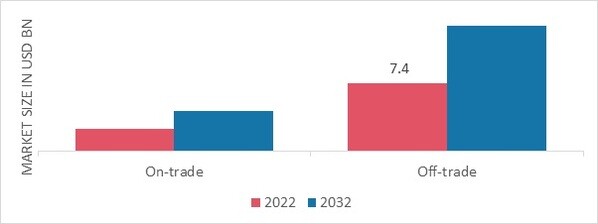Understanding The Eurovision Song Contest Voting System

Table of Contents
The Two-Part Voting System: Jury and Televoting
The Eurovision Song Contest voting system is unique in its dual nature, relying on a 50/50 split between professional juries and public televoting. This blend aims to balance expert opinion with popular preference, creating a result that reflects both critical acclaim and audience appeal.
-
Jury Selection: National juries consist of five music industry professionals – composers, musicians, singers, and music journalists – selected by each participating broadcaster. Their identities are kept secret until after the contest to prevent undue influence or lobbying. The selection process emphasizes expertise and geographic diversity to minimize bias.
-
Geographical Distribution: The selection of jury members strives for a balanced representation across different musical genres and regional backgrounds within each country. This aims to prevent a skewed perception of musical merit based on narrow tastes.
-
Televoting: The public votes via telephone, SMS text message, or dedicated Eurovision apps. This allows viewers from participating countries to actively participate in choosing the winner, directly reflecting popular opinion.
-
Safeguards Against Manipulation: Rigorous measures are in place to prevent voting fraud and manipulation. These include monitoring for unusual voting patterns and employing sophisticated systems to identify and exclude illegitimate votes. This ensures the integrity and fairness of the Eurovision Song Contest voting system.
The Jury Voting Process: Scoring and Weighting
Each jury member individually scores each performance with points from 1 (lowest) to 12 (highest), ranking their top ten songs. These individual scores are then aggregated to create a single national jury score for each country.
-
Potential Biases: While the selection process aims to mitigate bias, the subjective nature of musical taste means that some degree of personal preference is inevitable. However, the aggregation of five individual scores helps to minimize the impact of any single juror's potential bias.
-
Combining Jury Scores: The individual scores from each jury member are averaged to produce a single national jury score for each competing song. This ensures each participating country's jury has equal weight in the overall result.
-
Weighting System: The crucial 50/50 weighting system ensures that neither the jury nor the televote has undue influence. This balance aims for a result that reflects both critical and popular judgment.
The Televoting Process: Collecting and Aggregating Votes
Televoting plays a crucial role, providing a direct reflection of public opinion. Votes are collected and tallied nationally by each participating broadcaster, using secure systems to ensure accuracy and prevent fraud.
-
Voting Methods: Viewers can vote through various channels, including telephone calls, SMS text messages, and dedicated Eurovision apps. The ease of access to these methods ensures widespread participation.
-
Fraud Prevention: Advanced systems monitor voting patterns, looking for anomalies that could indicate fraudulent activity. Measures are in place to detect and discard any votes identified as illegitimate.
-
National Televote Scores: Once the voting period ends, each national broadcaster calculates its national televote score, reflecting the public's preferences. These scores are then transmitted to the Eurovision headquarters for final aggregation.
Combining Jury and Televote Results: Calculating the Final Score
The final score for each country is the sum of its jury score and its televote score, weighted equally at 50% each. This ensures a balanced representation of both professional and public opinion.
-
The 50/50 Split: This weighting is fundamental to the Eurovision Song Contest voting system. It prevents a single voting bloc from dominating the result, aiming for a broadly representative outcome.
-
Ranking the Countries: The combined scores are used to rank the participating countries. The country with the highest combined score is declared the winner.
-
Discrepancies: Occasionally, significant discrepancies arise between the jury and televote rankings. This highlights the differences in taste between professionals and the wider public, often sparking discussion and debate among fans.
Null Points and the "Douze Points"
Awarding "douze points" (12 points) signifies the highest score a country can give to another. Announcing "douze points" is a dramatic moment in the Eurovision broadcast, building tension and excitement. Conversely, receiving "nul points" (zero points) indicates that a country hasn't received any points from any other country. While not necessarily a reflection of poor performance, it highlights a lack of widespread appeal amongst voters.
Conclusion
This article has explored the multifaceted Eurovision Song Contest Voting System, demonstrating its complexity and the importance of both jury and televote contributions. The 50/50 weighting system ensures a balance between professional judgment and public enthusiasm. Understanding the intricacies of this system is key to fully appreciating the excitement and drama of the Eurovision Song Contest. Want to further enhance your understanding of the Eurovision Song Contest Voting System? Explore the official Eurovision website for detailed rules and past voting results! Dive deeper into the intricacies of the Eurovision Song Contest Voting System and become a true Eurovision expert!

Featured Posts
-
 Cne Seis Pruebas Que Demuestran El Apagon De Su Sitio Web
May 19, 2025
Cne Seis Pruebas Que Demuestran El Apagon De Su Sitio Web
May 19, 2025 -
 The Future Of Celebrity Tequila Navigating A Changing Market
May 19, 2025
The Future Of Celebrity Tequila Navigating A Changing Market
May 19, 2025 -
 Why Guests Keep Breaking Red Carpet Rules A Cnn Investigation
May 19, 2025
Why Guests Keep Breaking Red Carpet Rules A Cnn Investigation
May 19, 2025 -
 Resultats Financiers Credit Mutuel Am Q4 2024
May 19, 2025
Resultats Financiers Credit Mutuel Am Q4 2024
May 19, 2025 -
 Ufc Fight Night 220 Predictions Staff Picks And Betting Analysis
May 19, 2025
Ufc Fight Night 220 Predictions Staff Picks And Betting Analysis
May 19, 2025
